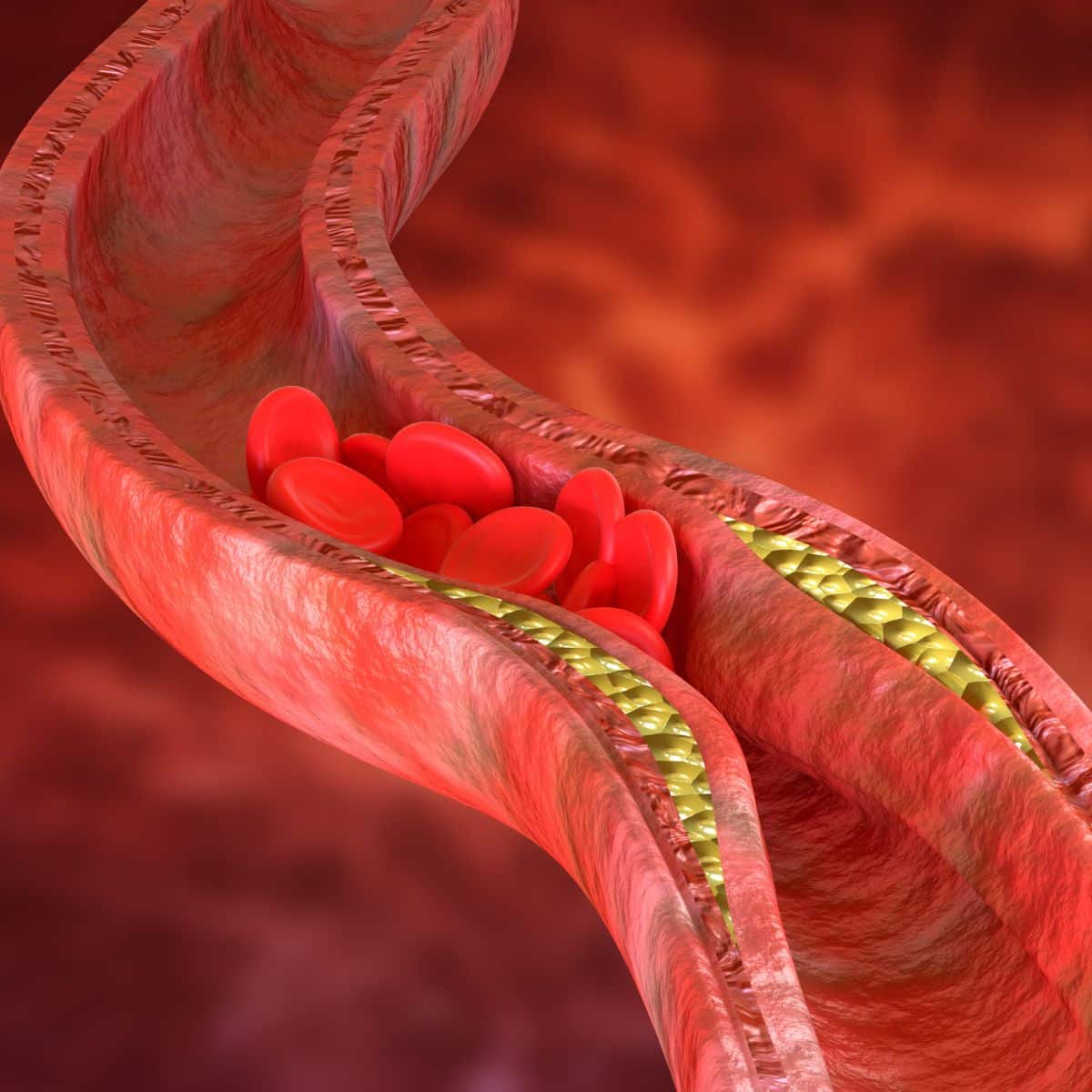Hyperlipidemia Treatment Oakville
Hyperlipidemia
What is Hyperlipidemia?
Hyperlipidemia (high cholesterol) refers to an excess of lipids and fats within the bloodstream, that may deposit along the vessel wall to create plaques. As these plaques grow, blood flow becomes limited to vital organs such as the brain or the heart. Sometimes these plaques can destabilize and rupture, forming a clot, which may cause a heart attack. Alternatively, these plaques can break off and embolize to the brain, which may lead to a stroke. Therefore, managing cholesterol to acceptable levels, reduces the overall cardiovascular risk of an adverse event.


Low-Density Lipoprotein (LDL)
This is the “Bad Cholesterol”.
LDL transports cholesterol particles throughout your body, depositing it within the blood vessel walls. This will gradually lead to the buildup of plaque within the arteries and represents the preliminary stages of atherosclerotic disease. The higher your LDL levels are, the higher the risk of heart disease, vascular disease, and stroke.

High Density Lipoprotein (HDL)
This is the “Good Cholesterol”.
HDL acts a scavenger, that picks up excessive cholesterol in the body, and takes it back to the liver to be cleared from the body. HDL therefore prevents the buildup of plaque within the arteries, thereby reducing your risk of atherosclerotic disease. The higher your HDL levels are, the lower the risk of heart disease, vascular disease, and stroke.
Risk Factors That Increase Unhealthy Cholesterol Levels
Lack of exercise
Poor Diet
Genetic Predisposition
Inadequate Sleep
Diabetes
Cigarette Smoking
Alcohol

Lack of exercise
The benefits of daily exercise go well beyond aesthetics. Exercise plays a key role in lowering cholesterol levels, and thereby lowering the risk of cardiovascular disease. Moderate intensity aerobic type exercise produces enzymes and proteins that enhance the efficiency of transporting the bad (LDL) cholesterol from the bloodstream to the liver for excretion. Exercise also helps increase good cholesterol (HDL), which acts as a scavenger to deliver this excess cholesterol to the liver for elimination. Triglyceride levels are also lowered with daily physical activity. This is great news, because it puts each of us in the driver’s seat of our lives – As the more you exercise, the more you remove harmful cholesterol from the body!

Poor diet
Unfortunately, although hyperlipidemia is predominantly due to lifestyle patterns, in the rare circumstance it may be attributable to a genetic predisposition and has been passed down in families. This is called Familial Hypercholesterolemia, and is caused by a genetic mutation that reduces the liver’s ability to remove excess cholesterol from the body. This can lead to high levels of LDL in the body, leading to an early onset of Heart Attacks or Strokes in multiple family members at a young age, and is typically seen throughout multiple generations. These individuals may require special medical treatment for prevention and treatment of atherosclerotic cardiovascular disease, such as the PCSK9 Inhibitors, and should be under the care of a cardiovascular specialist.

Genetic Predisposition
Unfortunately, although hyperlipidemia is predominantly due to lifestyle patterns, in the rare circumstance it may be attributable to a genetic predisposition and has been passed down in families. This is called Familial Hypercholesterolemia, and is caused by a genetic mutation that reduces the liver’s ability to remove excess cholesterol from the body. This can lead to high levels of LDL in the body, leading to an early onset of Heart Attacks or Strokes in multiple family members at a young age, and is typically seen throughout multiple generations. These individuals may require special medical treatment for prevention and treatment of atherosclerotic cardiovascular disease, such as the PCSK9 Inhibitors, and should be under the care of a cardiovascular specialist.

Inadequate Sleep
Too little sleep (< 6h/night) has been associated with increased levels of bad (LDL) levels and higher triglyceride levels. Prioritizing adequate sleep and managing conditions such as sleep apnea, are imperative to reducing your overall cardiovascular risk.

Diabetes
Cholesterol and glucose metabolism are closely related. Having high glucose levels (Uncontrolled diabetes) leads to higher cholesterol levels. Specifically, diabetes has been shown to increase the bad cholesterol (LDL and Triglycerides) levels, and lower the good (HDL) cholesterol, which can significantly increase the risk of cardiovascular disease.

Cigarette Smoking
Cigarette Smoking has been associated with lower levels of good (HDL) cholesterol levels, and higher levels of bad (LDL) Cholesterol. This can contribute to increased inflammation and plaque build-up within the blood vessel walls, which substantially increases the risk of a heart attack, stroke or peripheral vascular disease.

Alcohol
Excessive alcohol consumption has been shown to increase total cholesterol levels and triglycerides. However, drinking red-wine, which contains the natural plant chemical, resveratrol, which has antioxidant properties, may help improve the good (HDL) levels. The key here is moderation!

Frequently Asked Questions
Hyperlipidemia can be inherited, but in most circumstances it is due to unhealthy lifestyle choices. It is very manageable with daily moderate intensity exercise, a heart-healthy diet, as well as other lifestyle improvements, but it sometimes requires the addition of medications to lower your overall cardiovascular risk.
Hyperlipidemia usually does not have any symptoms. Your doctor may notice certain signs during their physical assessment if there is a genetic etiology, but for the most part it is diagnosable with a simple lab test.

Untreated hyperlipidemia will lead to the continual accumulation of plaque build-up within the blood vessels (atherosclerosis) of the entire body. Over time this could lead to:
- A Heart Attack
- A Stroke
- Carotid artery Disease
- Coronary Artery Disease
- Microvascular Disease
- Peripheral Vascular Disease
- Sudden Cardiac Arrest

Still have a question about hyperlipidemia? Speak to your doctor about a referral to the Chahal Cardiovascular Centre for a cardiovascular consultation.